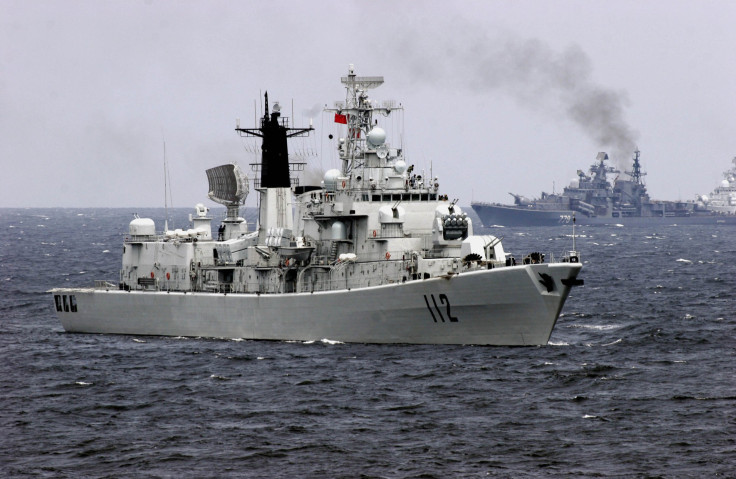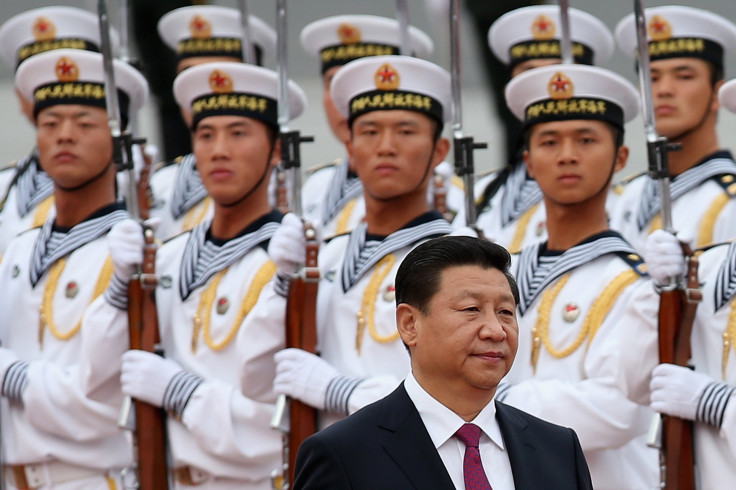China Navy Ships Turn Back From Bering Sea: Presence Seen As Pacific Challenge To US

Update as of 04:02 a.m. EDT: Chinese naval vessels spotted operating in the Bering Sea this week entered U.S. territorial waters, Pentagon officials, quoted by the Wall Street Journal, said Friday.
The five Chinese ships, which where were operating in the area for the first time, came within 12 nautical miles of the Alaskan coast, but complied with international law, military officials told the paper.
Original story below
Five Chinese naval vessels that were spotted operating for the first time in the Bering Sea, near islands off Alaska, on Wednesday have turned back, U.S. Navy officials said. Chief of Naval Operations Adm. Jonathan Greenert told Reuters he did not view the incident as unexpected or alarming.
"They already had one of their icebreakers up in that area, and they weren't that far away with an exercise, and they've already started their return transit," he said. The ships had been identified by U.S. military officials as three combat vessels, a replenishment vessel and an amphibious landing vessel from China's People Liberation Army Navy (PLAN).
The ships' deployment to the Bering Sea took place while President Barack Obama was visiting Alaska on a three-day tour to highlight the issue of climate change.
The incident represented the first time that Chinese navy ships had deployed in the Bering Sea. U.S. military officials, however, said the craft were operating legally in international waters, and their activities were “not threatening.”

Experts were unclear as to how to interpret the deployment. Some argued that the ship's presence in the region represented a declaration of interest in the resource-rich Arctic region. Others said that it was the result of the scope of China's military operations expanding along with its increasingly globalized economic interests.
Ronald O'Rourke, U.S. specialist in naval affairs at the Congressional Research Service, said in a July report, cited by RT News, that China's increasing naval power represents a challenge to the U.S. “Observers of Chinese and U.S. military forces view China’s improving naval capabilities as posing a potential challenge in the Western Pacific to the U.S. Navy’s ability to achieve and maintain control of blue-water ocean areas in wartime -- the first such challenge the U.S. Navy has faced since the end of the Cold War,” he wrote.
U.S. and Chinese military forces have, in recent months, been involved in a series of confrontations in the South China Sea, in areas where Beijing claims sovereignty, but the U.S. regards as international waters, and other Asian nations claim as their territorial waters.
In 2013, China declared an Air Defense Identification Zone over the East China Sea, in an area that included islands that are the focus of a territorial dispute between China and Japan. China demands that aircraft traveling through the zone identify themselves to its military. The U.S. has forcefully challenged China's claims to sovereignty in the disputed airspace, flying B52 bombers through it without notifying China first, the Wall Street Journal reported. China had threatened to take military action against aircraft entering the zone without prior notification, but took no such action.
In addition, the U.S. and China have clashed over the rights to navigate through territory in the South China Sea, over islands on which China has been pursuing land reclamation activities. Beijing argues its activities on the islands grant it sovereignty over the surrounding waters, a claim that its neighbors, and the U.S., strongly dispute.
© Copyright IBTimes 2025. All rights reserved.






















